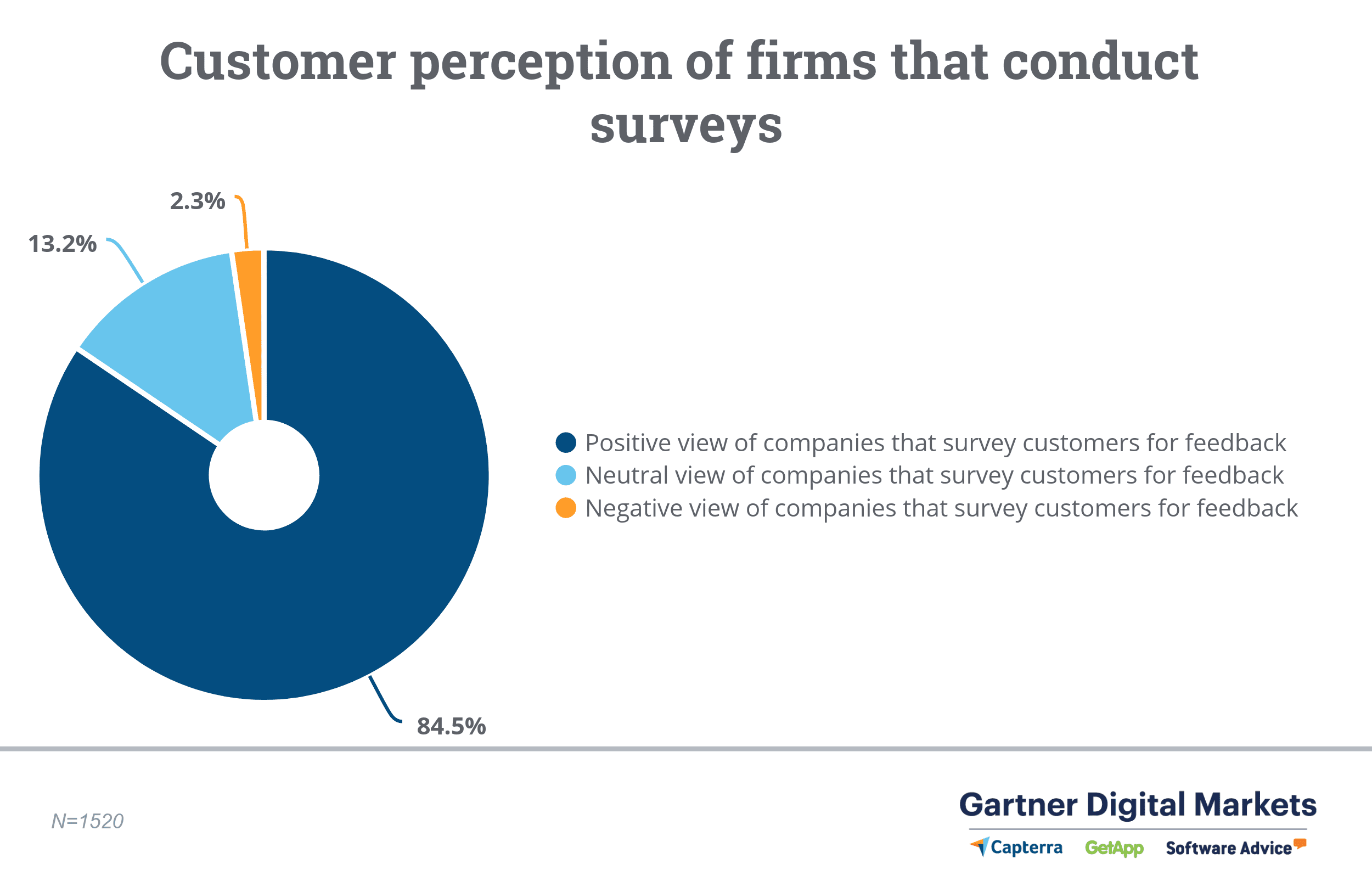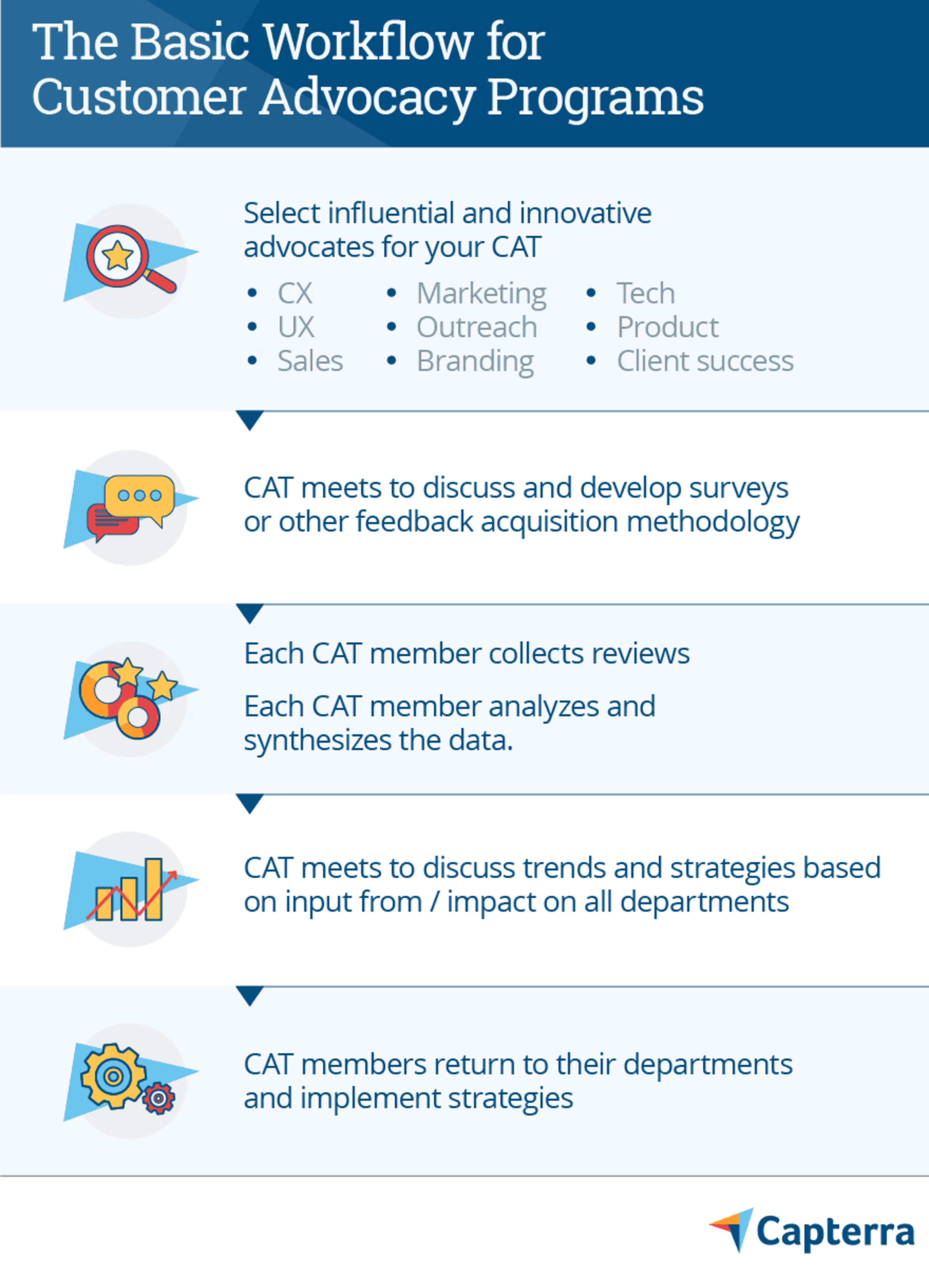There's a line in the movie "World War Z" where the Israeli guide for Brad Pitt's character says:
"If nine of us with the same information arrived at the exact same conclusion, it's the duty of the tenth man to disagree."
I could talk for days about Argumentation Theory, but the point I'd like to make is this: As a small to midsize business (SMB) owner, it's your job—and the job of your employees—to help your company.
You need a tenth man to help your customer.

Customer advocacy programs are there for the customer
It's an unspoken truth that while caring for your customers can benefit your company, you're doing so because it benefits your company.
This means that all of your good intentions can seem less altruistic and more opportunistic, since they're now tied to pushing your own business forward.
What you need—to make up for that loss of altruism—is either a customer advocate or a customer advocacy program, both of which serve a sole purpose: voicing customer needs, desires, and concerns—no matter the cost to your company.
Customer advocacy programs are crucial to retain and deepen relationships between vendors and buyers.
If you've never implemented one at your SMB, it can be difficult to know where to start building your program. If you've already got one, however, the difficulty lies in identifying where your program is lacking.
Using reviews and survey data is a simple, established way to initiate customer advocacy, which can help with your customer nurturing as well as provide crucial feedback to understand how your business can retain clients, improve operations, and show customers you're putting them first.
What exactly is a customer advocate?
First and foremost, let's get something straight: Google's confused.
As all-knowing as Google is, it's been mixing up the terms customer advocate and brand advocate.
What's the difference between brand and customer advocates?
Brand advocates are customers who love your product so much that they tell all their friends about it.
Customer advocates are employees whose sole responsibility it is to make sure that customers are being looked after.
Customer advocates are a specific role within a company and a key member of a customer experience team that not every SMB has the resources for.
So what do you do if your business can't afford one?
Simple. Create a customer advocacy program.
How to create a customer advocacy program of your very own
The 9 stakeholders you need to build it
When I talk about stakeholders, I'm talking about those folks who either contribute to or benefit from a customer advocacy program. They're the ones you should listen to while building your program.
Here's a list of nine stakeholders to get you started. Though this list is by no means comprehensive, it is a bit lengthy:
Customer experience (CX) team
User interface (UI) design team
Sales
Marketing
Outreach
Branding
Tech
Product
Client success
Now, I hear you saying: "Wait a second. That seems like ... almost every single team in my company?"
There's a reason for that.
Customer advocacy requires input from every department that has a stake in the customer journey.
That brings us to one key takeaway out of the gate:
Your customer advocacy program should include at least one representative of each outward-facing department within your company.
Why does this matter?
Let's look at an example.
If the customer advocacy member of your marketing department gets a wealth of complaints that their email campaigns are too hard to follow, they'll be tempted to change the way those emails are designed.
But if there's not a member of the branding team getting feedback as well, there'll be no one to help guide the marketing campaign adjustments, and you run the risk of upsetting customers even more.
These team members will need to collaborate and combine all feedback from your customers and leads. From there, they can meet to discuss major trends and themes and then develop strategies for shifts in policy and goals.
3 qualities of a strong customer advocate
If you can't afford to hire a specific customer advocate, then you should assign their duties to current employees.
To do that, you need to identify who within your existing teams makes for the best customer advocates.
How do you do that? Start by looking for these three qualities:
A history of caring about your customers
Innovative idea generation
Influential among their peers
Why does this matter?
If a member of your sales team who cares deeply about your customers and comes up with great ideas is often unheard or not taken seriously by their peers, it will be challenging for them to help enact any lasting change that could be instrumental to your company's success.
It's important to make sure that the people you find with these qualities have enough bandwidth to join your customer advocacy program. Otherwise, you risk pushing your employees toward burnout.
For more information on avoiding employee burnout, check out this series of articles by Brian Westfall:
Why employees stayWhy employees quit
Build a customer advocacy program centered around listening to the customer
Once you've gathered your team, it's time to flesh out what your customer advocacy program will actually look like.
To start, you have to orient your customer advocacy team (CAT) toward the voice of your customer.
Team members must be trained to observe and analyze customer needs, expectations, successes, and frustrations or desires with your product. This will make your CAT more purr-suasive later down the line.
Use surveys to collect customer data
Surveys aren't the only way to collect customer reviews, nor should you think as much.
However, surveys are a simple and effective way to ensure that the data you collect is consistent and thorough and gives customers a chance to voice their positive and negative feedback.
According to a recent Gartner survey, 84.5% of respondents had a positive view of companies that surveyed them.

Out of 1,520 customers, almost 1,300 say they have a positive view of companies that solicit feedback
While that's great news, don't get too far ahead of things. Just because your customers like being surveyed doesn't mean any old survey will do.
You need top-of-the-line surveys. You need surveys that make customers feel heard and that touch on very specific points.
Your CAT also needs to know what data they're looking to collect—something they, as a team, should decide.
Here's a quick list of just some of the data they need to design questions around:
Net promoter score
Customer satisfaction
Ease-of-use of your product
Customer attrition rate
Invoice accuracy rate
Demographic data
Gross retention rate
Customer engagement
Percentage of unresolved problems
By using surveys to collect data and feedback, you're establishing a concrete methodology. It eliminates the risk of having an incomplete picture of how your customers actually feel.
Having a concrete methodology also ensures that your CAT collects every piece of information from every source, every time.
Why does this matter?
If you allow your CAT to gather feedback in an ad hoc manner, it'll be much harder to notice trends. It'll prevent your company from truly understanding the people buying your product, and without that, you won't be able to nurture leads.
Ad hoc feedback muddles the voice of the customer and leaves your CAT with no sense of direction.
All of the information that you gather through surveys will help you build out personas and find trends within groups of customers.
However, you have to make sure that survey questions are packaged correctly to avoid alienating your customers. They shouldn't just collect data in the form of preset responses. Be sure that your surveys include the option for free-form thought that your CATs can unravel and analyze.
As part of your CAT program, have your customer advocates write a survey that treats customer data as if it were part of a conversation. This makes it significantly more engaging and feels more personal.
Surveys are part of the customer journey (lodged right between post-funnel and pre-funnel) and should be treated as such.
Use customer advocacy programs to build your strategies moving forward
And where does all of this information go?
You have to make changes and adjustments to your company, of course. After all, according to Qualtrics, $83 million in revenue is lost each year to poor customer experience.
How can your SMB avoid losing all that money?
Easy: listen to your customers.
By going through the reviews and surveys, your customer advocates and your CAT will be able to ideate strategies for both their individual teams and your company as a whole.
Why does this matter?
Your CAT member from your design team is getting feedback that the site map is too complicated and difficult to navigate, while the CAT member on your client success team is hearing that people are considering another vendor because they don't think you offer services or features that you definitely do offer.
Your CAT can coordinate this information, and come up with the best possible strategies to help customers find the information they need by redesigning your website and the way features are laid out.
Putting your key takeaways together
In the end, you'll have a customer advocacy program that looks something like this:

If you can't afford to hire a separate customer advocate, you must bring together a customer advocacy team from every pertinent department. They won't just listen to the voice of the customer but will actively solicit it and help develop strategies based on it.
Your success—and your clients'—depends on it, and while it requires an investment on your part, you're ultimately improving your customer retention and your efforts will yield a strong ROI.